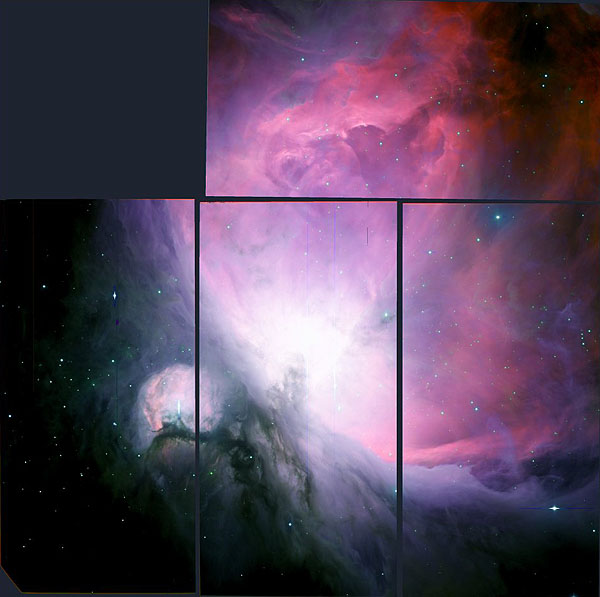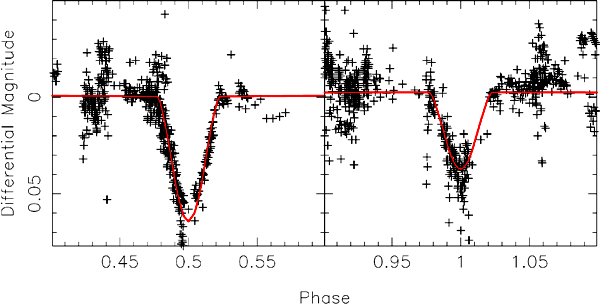Astronomers have been able to obtain accurate empirical measurements of the masses and radii of the component stars of a new low mass eclipsing binary system.
The star system, called JW 380, comprises of a pair of 0.26, 0.15 solar-mass pre main sequence stars and it is located in the very young Orion Nebula Cluster (ONC).
 |
| Figure 1. Colour composition of a Wide Field Camera image of the Orion Nebula. Credit: Jonathan Irwin [ JPEG ]. |
Eclipsing binaries are a special class of spectroscopic binaries,
systems where the components are so close together that they cannot be
separated by imaging. The stars orbit each other with
a period of 5.3 days, and are separated by only 9.4 solar radii, or
0.04 AU (where 1 AU is the distance from the Earth to the Sun), which
is a tenth of the distance from Mercury to the Sun. In an eclipsing binary,
the system is edge-on as seen from the Earth, so one star passes in
front of the other every half orbit, causing the total light emitted to
dim in a periodic fashion. By measuring the shape of these eclipses
in a light curve of the system, astronomers can derive the radii of the stars
in the binary.
 |
| Figure 2. Eclipses in the light curve of JW 380. |
This is the second eclipsing binary identified in the ONC. The first
was announced during 2006 and contains two brown dwarfs, or "failed
stars", systems which are too cool to burn hydrogen into helium. JW
380 contains instead two M-dwarf stars of 3-4 times heavier mass. By
identifying eclipsing binaries spanning a range of masses and ages, it is possible to map the evolution of stellar radius with age empirically, which it can then be compared
to models of stellar evolution to help understand how
stars evolve.
The binary system JW 380 was identified using time-series imaging
observations taken with the Wide Field Camera on the Isaac Newton
Telescope as part of the Monitor project, a large-scale survey
searching for eclipsing binary and transiting extrasolar planet
systems in a number of young open star clusters. Follow-up
spectroscopic observations obtained using the FLAMES fibre-fed
spectrograph on the ESO VLT UT2 and the NOAO Phoenix spectrograph on
Gemini South were used to derive the radial velocities and hence
component masses of the stars, as well as to confirm the system's
membership in the ONC.
The observations confirm the predictions of theoretical models that
low-mass stars are "bloated" at these extremely young ages (having
measured radii of 1.2 and 0.9 solar radii), because they are still
contracting in the stages between birth and arrival onto the main
sequence. Comparing the measured radii with the model predictions
indicates an age of 2-3 Myr, consistent with existing estimates
for the ONC.
A third component in the system is also visible in the spectroscopic
observations. This may be physically associated to the binary, making
a triple star system with the third component in a wide orbit. This
will be the subject of future follow-up observations to derive its
orbital parameters.
More information:



